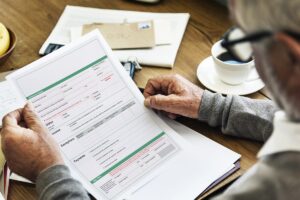Can Tax Debt Be Included in Bankruptcy or a Consumer Proposal?
Yes — and here’s what every Canadian taxpayer needs to know. If you owe money to the Canada Revenue Agency (CRA), you’re not alone. Many individuals struggling with debt find themselves owing back taxes — sometimes a significant amount. And while it’s true that the CRA has more aggressive collection powers than other creditors, that doesn’t mean your tax debt is untouchable. Below, we break down what happens to tax debt in bankruptcy and consumer proposals, your legal options, and what the CRA can (and can’t) do.Understanding CRA Tax Debt: What Makes It Different?
CRA debt is classified as unsecured debt unless the agency has taken specific legal steps to secure it — such as registering a lien against your home or property. While tax debt is governed by federal laws and the CRA has powerful tools to collect, the debt itself is still subject to insolvency proceedings like any other unsecured obligation. That means:Income tax debt can be discharged through bankruptcy or a consumer proposal — as long as certain conditions are met.
Can You Eliminate CRA Debt Through Bankruptcy?
Yes. When you file for personal bankruptcy in Canada, your unsecured income tax debt will be discharged along with other eligible debts — provided the CRA hasn’t already secured it through a lien or judgment.Key points:
- Bankruptcy immediately halts CRA collection actions, including wage garnishments and bank account freezes.
- You’re no longer responsible for the unpaid income tax once the bankruptcy is discharged.
- However, CRA will withhold any tax refunds you’re entitled to for the year of your bankruptcy and any prior years, and apply them against your outstanding balance.
What About Consumer Proposals and CRA?
A consumer proposal is a legally binding debt settlement plan that allows you to repay a portion of your debt over time. The CRA is open to accepting proposals — but only if you’re compliant with current filing obligations.To qualify:
- All personal tax returns must be up to date before submitting a proposal.
- You must stay current on future tax filings and payments once your proposal is accepted.
CRA Powers: What Happens If You Do Nothing?
The CRA has collection tools that most creditors don’t, including:- Wage garnishments without court approval
- Freezing bank accounts
- Registering liens against property
- Intercepting GST/HST credits or tax refunds
What Happens After You File?
Once you file for bankruptcy or a consumer proposal:- The tax clock resets. You’re still responsible for any new taxes owed from that point forward.
- You must file on time moving forward and pay taxes owing in the years after your filing.
- CRA will keep your refund(s) for the current and prior tax years and apply them to your balance.
Your Next Step: Book a Free Consultation
If you’re struggling with tax debt and worried about CRA collection actions, you’re not out of options. At Doyle Salewski, our Licensed Insolvency Trustees have helped thousands of Canadians legally reduce or eliminate CRA debt through bankruptcy and consumer proposals.- Free, no-obligation consultation
- Offices across Eastern Ontario & Western Quebec
- Bilingual service available





